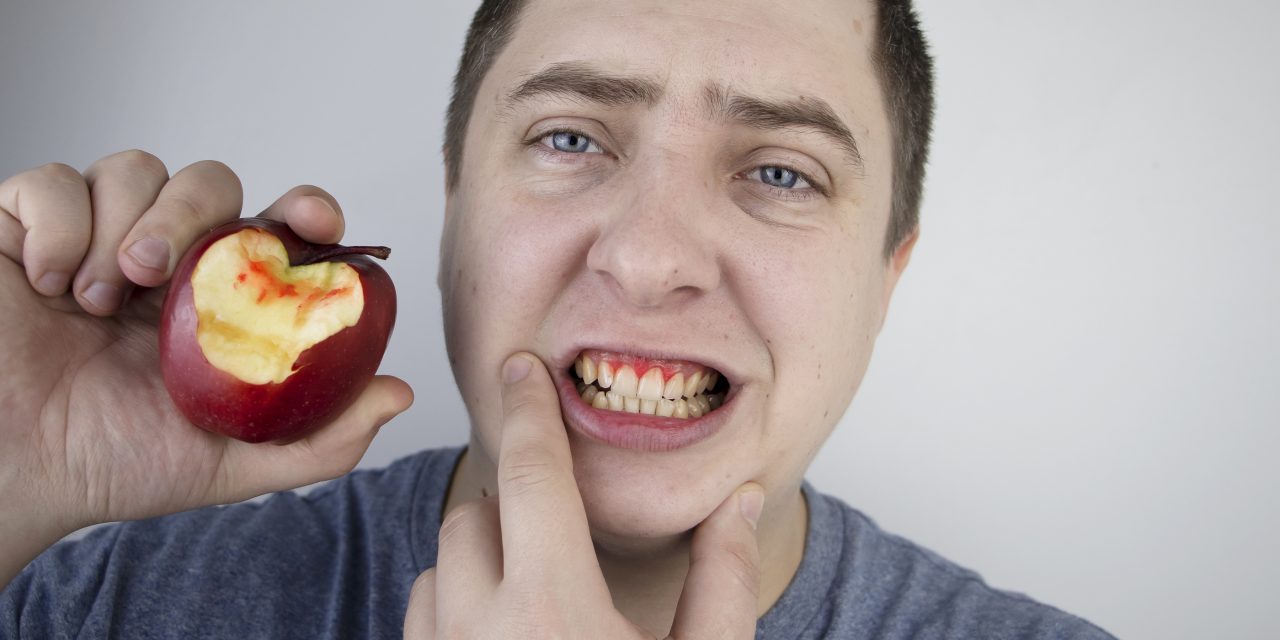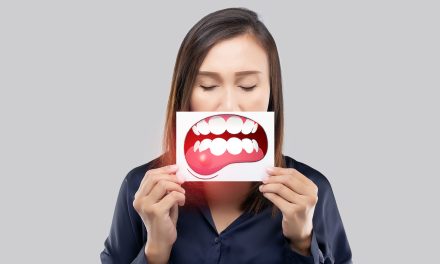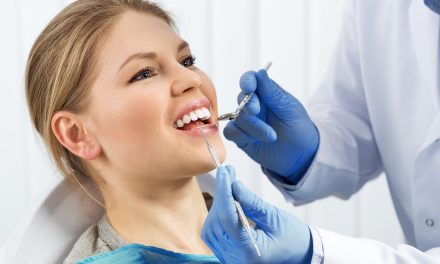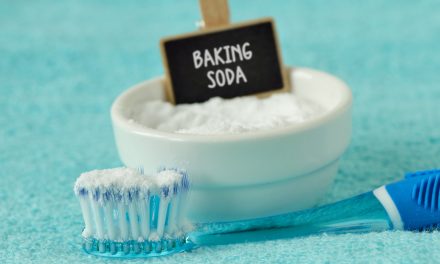Gingivitis, a common and mild form of gum disease, is characterized by irritation, redness, and swelling of your gingiva, the part of your gum around the base of your teeth. It’s important to address gingivitis promptly, as it can lead to much more serious gum diseases like periodontitis and potential tooth loss if left untreated. Fortunately, with swift and proper care, symptoms can often be reversed in approximately a week.
To address gingivitis quickly, incorporating consistent and thorough dental hygiene is crucial. This includes brushing twice daily, flossing, and possibly using mouthwash prescribed by a dentist. Immediate behavioral changes, such as dietary adjustments and smoking cessation, also play vital roles in mitigating gum inflammation. For more persistent cases, professional dental cleaning and treatments may be required to remove plaque and tartar that can’t be cleaned away with home oral care.
When it comes to gingivitis, understanding the condition is half the battle, and taking the right actions can help ensure the health of your gums and teeth. While the methods to treat gingivitis are fairly straightforward, prevention through ongoing oral care and lifestyle choices is key to maintaining long-term dental health.
Key Takeaways
- Effective treatment of gingivitis usually involves improved dental hygiene and possibly professional care.
- Addressing lifestyle factors, such as diet and tobacco use, is essential for rapid reduction of gingivitis symptoms.
- Preventive care, including regular dental check-ups, is critical to avoid recurring gingivitis.
Understanding Gingivitis
Gingivitis is a common and treatable form of gum disease, but quick intervention is crucial to prevent its progression. Effective treatment hinges on identifying the causes, recognizing the symptoms, and understanding the associated risks.
Causes
- Poor Oral Hygiene: The primary cause of gingivitis is plaque build-up on teeth, which is the result of inadequate brushing and flossing.
- Other Factors: These can include smoking, diabetes, certain medications, and genetic predisposition.
Symptoms
- Redness and Swelling: Gums become red, swollen, and tender to the touch.
- Bleeding: One may experience bleeding during brushing or flossing.
Risks
- Tooth Loss: If left untreated, gingivitis can progress to periodontitis, potentially leading to tooth loss.
- Systemic issues: It is linked to broader health issues, such as heart disease and stroke.
Immediate Actions to Take
To address gingivitis swiftly, one must prioritize two critical steps: arranging a dental consultation and upgrading oral hygiene routines.
Schedule a Dentist Appointment
- Timing: Contact a dentist immediately to schedule an appointment within the week.
- Objective: The dentist will perform a thorough assessment and professional cleaning, which is vital for controlling gingivitis.
Enhance Oral Hygiene Practices
- Brushing: Upgrade to a soft-bristled toothbrush and brush teeth gently at least twice a day, using fluoride toothpaste.
- Time: Spend at least two minutes on each brushing session.
- Flossing: Floss daily to remove plaque from between teeth, where a toothbrush can’t reach.
- Mouthwash: Incorporate an antimicrobial mouthwash that targets gingivitis to reduce bacteria levels.
One must be consistent with these practices to see improvements in gum health.
Daily Oral Care Routine
Adhering to an effective daily oral care routine is critical for reversing gingivitis within a week. It involves meticulous tooth brushing, proper flossing, and the regular use of mouthwash.
Tooth Brushing Techniques
Brushing twice daily is essential using a soft-bristled toothbrush and a fluoride toothpaste. One should spend at least two minutes during each session, breaking it down as follows:
- 30 seconds per quadrant of the mouth
- Use a gentle circular motion
- Brush at a 45-degree angle to the gums
Flossing Methods
Flossing daily helps remove plaque and food particles from between teeth and under the gumline, areas a toothbrush can’t reach.
Steps for effective flossing:
- Use about 18 inches of floss, winding most around one finger and the rest around the opposite finger.
- Gently guide the floss between teeth with a zigzag motion.
- Curve the floss around the base of each tooth, going beneath the gumline.
Mouthwash Use
Incorporating an antibacterial mouthwash can help reduce bacteria and plaque that cause gingivitis. One should:
- Swish the mouthwash for 30 seconds.
- Use mouthwash that contains chlorhexidine or essential oils for optimal benefits.
- Avoid eating or drinking for 30 minutes after using mouthwash to allow the active ingredients to work effectively.
Lifestyle Adjustments
Making specific lifestyle adjustments can have a significant impact on the improvement of gingivitis. These include changes in diet to reduce inflammation and the cessation of smoking, which can both aid in the healing process and improve oral health.
Nutritional Changes
A person looking to cure gingivitis should increase their intake of vitamin C and vitamin K, both of which can help in repairing gum tissue and reducing gum bleeding. Foods high in these vitamins include:
- Vitamin C: Oranges, kiwi, strawberries, bell peppers
- Vitamin K: Spinach, kale, green leaf lettuce, broccoli
Reducing consumption of sugars and refined carbohydrates is essential, as they contribute to plaque buildup and worsen gum inflammation.
Smoking Cessation
Smoking is known to hinder the body’s immune response and is a major risk factor for the development of gum disease. Patients are advised to quit smoking to facilitate the healing of gingivitis. Resources for cessation include:
- Support groups: Engage with others who are quitting.
- Nicotine replacement therapy (NRT): Use gum, patches, lozenges.
- Prescription medications: Consult a healthcare provider for options like varenicline (Chantix) or bupropion (Zyban).
Stopping smoking not only helps in gingivitis recovery but also improves overall oral hygiene and health.
Professional Dental Treatments
Professional treatment for gingivitis often involves thorough cleaning techniques and medication management designed to target and eliminate the underlying infection causing the gum inflammation.
Deep Cleaning Procedures
Scaling: This procedure involves the removal of tartar and bacteria from the tooth surfaces and beneath the gums. A dentist or dental hygienist uses specialized instruments to carefully eliminate these substances.
Root Planing: Root planing smooths the root surfaces, discouraging further buildup of tartar and bacteria, and helps in healing the gum tissue. It is often done in conjunction with scaling.
Medication Options
Antibiotic Therapies: Depending on the severity, antibiotics can be prescribed in various forms such as a mouth rinse, an oral antibiotic, or a gel that is applied directly to the gum pocket after a deep cleaning to help control infection.
Pain Relievers: Over-the-counter or prescription-based pain relievers may be recommended to manage any discomfort following professional procedures.
Home Remedies
When addressing gingivitis, certain home remedies can be effective in reducing inflammation and promoting oral health. Employing these methods consistently can contribute to improvements within a week.
Saltwater Rinse
A simple yet effective method, a saltwater rinse can help reduce bacteria and soothe inflamed gums. Dissolve 1/2 teaspoon of salt in 1 cup of warm water and swish the solution around the mouth for 30 seconds before spitting it out. Repeat this twice daily.
Turmeric Gel
Turmeric contains curcumin known for its anti-inflammatory and antimicrobial properties. Apply a turmeric gel to the gums and leave it on for about 10 minutes before rinsing with water. This can be done twice a day to help reduce gingivitis symptoms.
Oil Pulling
Oil pulling involves swishing oil in the mouth to remove bacteria and promote oral hygiene. Use a tablespoon of coconut, sesame, or olive oil, swishing it around the mouth for 15-20 minutes. Afterward, spit out the oil and rinse the mouth with warm water. This practice should be done once daily on an empty stomach.
Prevention Strategies
To effectively prevent gingivitis, one must prioritize consistent oral hygiene and professional dental care.
Regular Check-Ups
Regular dental check-ups are crucial in preventing gingivitis. Dentists recommend:
- Frequency: At least twice a year
- Purpose: To remove plaque and tartar buildup
During these visits, a dental professional can also provide tailored advice on oral care practices and detect early signs of gingivitis.
Long-Term Oral Care
Long-term oral care is the foundation of gingivitis prevention. Essential practices include:
- Brushing: Twice daily with fluoride toothpaste
- Flossing: Daily to remove food particles and plaque between teeth
One should also consider:
| Practice | Description |
|---|---|
| Mouthwash | An antiseptic mouthwash can reduce plaque and eliminate bacteria. |
| Diet | Limiting sugary foods and drinks aids in reducing plaque formation. |
Understanding Treatment Outcomes
Gingivitis is an inflammation of the gums that, if treated promptly, can be reversed. Treatment outcomes for gingivitis are generally positive, especially when intervention occurs early in the disease’s progression. The timeline for improvement can vary based on the severity of the condition and the treatment methods employed.
Effective treatment typically involves:
- Professional Dental Care: This includes scaling and root planing to remove plaque and tartar.
- Improved Oral Hygiene: Regular brushing with fluoride toothpaste and flossing are critical.
- Lifestyle Adjustments: This encompasses diet changes, quitting smoking, and managing underlying health conditions.
Patients should expect to see a reduction in gum redness, swelling, and bleeding within a few days. Full recovery may take a week or longer. It is important for individuals to adhere strictly to the prescribed treatment regimen and to maintain good oral hygiene practices to prevent recurrence.
Treatment outcomes can be tracked through:
| Indicator | Description |
|---|---|
| Redness | Lessening of the gum’s red hue |
| Swelling | Reduction in gum puffiness |
| Bleeding | Decrease in bleeding during oral care |
| Plaque Accumulation | Diminished presence of plaque |
Should symptoms persist beyond two weeks, consultation with a dental professional is advisable. Re-evaluation may be necessary to adjust treatment or address more serious underlying conditions.
Frequently Asked Questions
The following segments address common inquiries related to the management and treatment of gingivitis within a one-week period.
What are effective home remedies for gingivitis?
Effective home remedies include regular brushing with fluoride toothpaste and flossing, using an antiseptic mouthwash, and saltwater rinses. Diet changes to include more vitamin C and reduction in sugars can also support gum health.
Can gum disease be effectively treated without a dentist’s intervention?
Mild cases of gingivitis can often be managed at home with diligent oral hygiene and lifestyle adjustments. However, professional cleaning and dental advice are essential for severe cases or if there is no improvement.
What are the signs that gingivitis is improving?
Signs of improvement include reduced redness and swelling, a decrease in bleeding during brushing or flossing, and lessened gum tenderness. One may also notice diminished bad breath associated with gingivitis.
What treatments provide the quickest relief from gingivitis?
Professional dental cleaning provides the quickest relief for gingivitis symptoms. At home, consistent and proper brushing and flossing routines paired with antiseptic mouthwashes typically offer swift symptom improvement.
What are recommended oral hygiene practices to prevent gingivitis accumulation?
To prevent gingivitis, one should brush teeth at least twice a day, floss daily to remove plaque from areas the brush doesn’t reach, use an antiseptic mouthwash, and schedule regular dental check-ups for cleaning and examination.
Is it realistic for gingivitis symptoms to disappear within one week?
With rigorous oral hygiene and possibly a professional cleaning, it is possible for gingivitis symptoms to significantly diminish or even disappear within one week if the condition is not advanced.


















